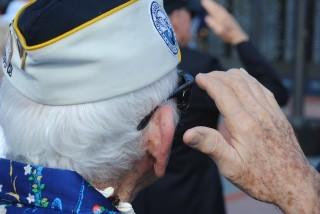Statistics tell us that most of us will need long term care at some point. For veterans, the Veterans Administration (VA) makes funding available to assist in paying for such care, but it’s easy for these benefits to be overlooked. We’ll look at three of the pension benefits available to veterans.
1. Pension with Aid and Attendance. This is both the most well-known benefit and the highest amount of aid. Any veteran or their surviving spouse who meet both the medical and financial requirements can obtain assistance in paying for nursing home, assisted living or at-home care. If there is a demonstrable financial need paired with a physician’s statement regarding the need for assistance, a veteran could receive up to $1,788 per month, $1,149 for a surviving spouse or $2,120 for a couple.
2. Pension with Housebound Allowance. While a slightly lower benefit, there are also fewer hoops to jump through to access this benefit. A veteran who would not qualify for Aid and Attendance but who needs regular assistance, can obtain a physician’s statement and prefers to stay at home may qualify. In fact, care can be provided by family members.
3. Basic Pension. The smallest of the three types, a basic pension doesn’t require a physician’s statement, but in order to receive the benefit, a veteran or surviving spouse much be 65 or older or disabled, and they must demonstrate limited assets and income.
In order to qualify for benefits, a veteran must meet certain requirements: he or she must meet certain wartime and discharge requirements (other than dishonorable), must be at least 65, or be permanently and totally disabled. To qualify as disabled, an eligible veteran must be in a nursing home, fit Social Security Administration disability guidelines, be unemployable for their lifetime due to their condition or be suffering from a condition where they could reasonably expect it would be impossible to remain gainfully employed.
Much like qualifying for Medicaid, there are certain asset and income tests before a veteran or surviving spouse may qualify for benefits. There is an $80,000 “countable asset” guideline as the VA looks at not only assets and income, but also total net worth, life expectancy and regular medical expenses. The VA doesn’t include a home or vehicle in these calculations and there is some allowance for a higher level of assets: a Veterans Services Representative can file paperwork to justify allowing benefits to someone with greater assets.
Also much like Medicaid planning, certain “spend-down” tactics, such as converting liquid assets like cash into an annuity, for example, can help in meeting the income and asset tests. However, in order to ensure it’s done properly and also won’t disqualify the veteran from Medicaid eligibility later on, careful planning with an experienced elder law and estate planning attorney is necessary.
It can take the VA over a year (and even longer, in some cases) to make its determination, but the good news is that once a veteran qualifies, their benefits are paid going back to the month after they submitted their application. Working with an experienced attorney and ensuring all the proper documentation is in order can speed up the process. That can be especially important for aging veterans or their surviving spouses, as time can be a crucial element.
According to estimates, only approximately 543,000 of the 10 million who could be eligible receive these benefits. Make sure you work with an attorney specializing in elder law and estate planning and experienced with veterans benefits; it can be a huge relief to you and your family as you go through the process.
For more information on this and other elder law topics, explore our website and contact us to schedule your consultation today!
Reference: EstatePlanning.com (October 16, 2012) “VA Benefits for Long-Term Care of Veterans and their Surviving Spouses”
Senior Veterans Service Alliance (2016) “Understanding the Veterans Pension Benefit and the Aid and Attendance Allowance”






